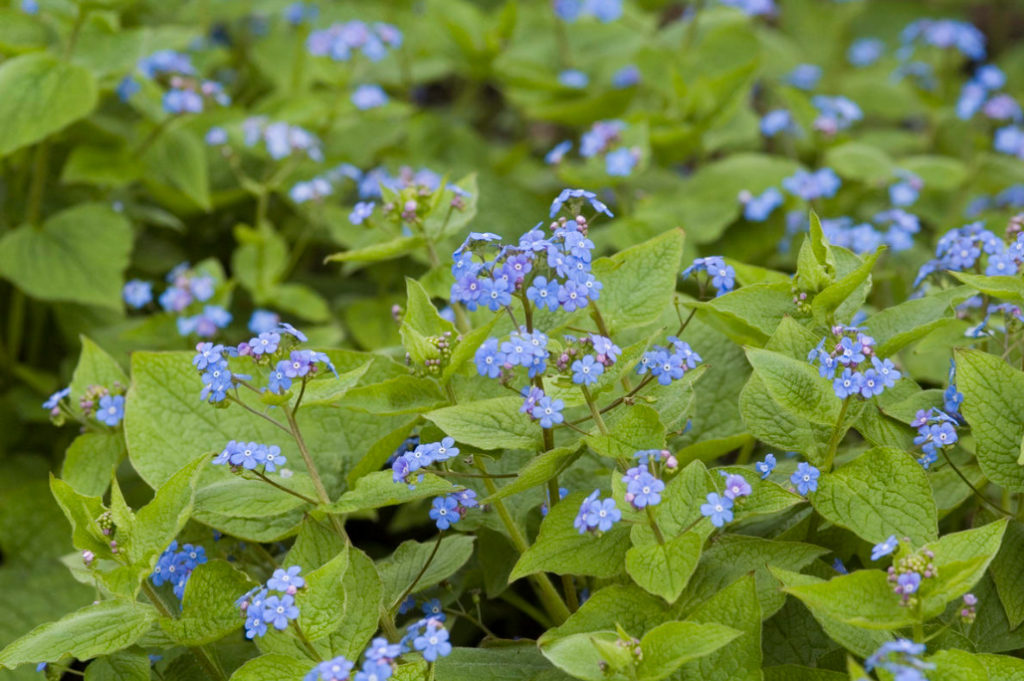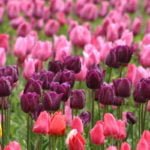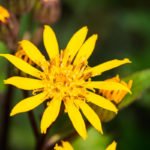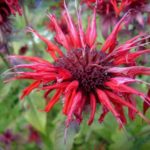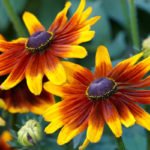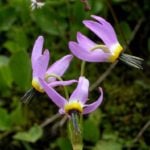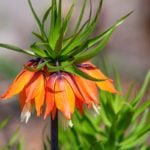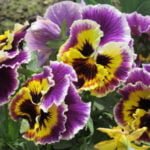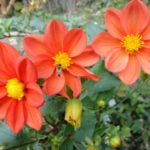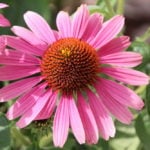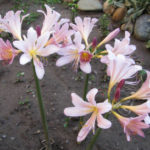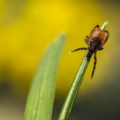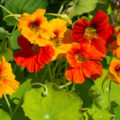Brunnera macrophylla is one of the best plants for shady flower beds, because it will decorate the flowerbed from spring to late autumn. The secret of Brunnera’s “eternal youth” is simple: the leaves appear throughout the season, which gives the dense bush a fresh and elegant look. It is for the spectacular heart—shaped leaves that this beauty is appreciated, and the charming flowering is a pleasant bonus to them.
It has been known in culture since the beginning of the XVIII century, but it was actively bred after one century. With the advent of chic variegated varieties, Brunnera has known the peak of fame. If earlier it was appreciated for its uniquely beautiful flowers, now leaves of amazing beauty have been added to them. Moreover, during flowering they are small, and after that they begin to grow actively and can reach a length of 20 cm.
This feature of Brunnera can also be attributed to significant advantages — it can live up to 10-15 years in one place without division, transplantation and loss of decorativeness.
Botanical description
Brunnera macrophylla, syn. Anchusa myosotidiflora is a representative of the Boraginaceae family. In nature, it is distributed over a vast territory from the Caucasus to Iran.
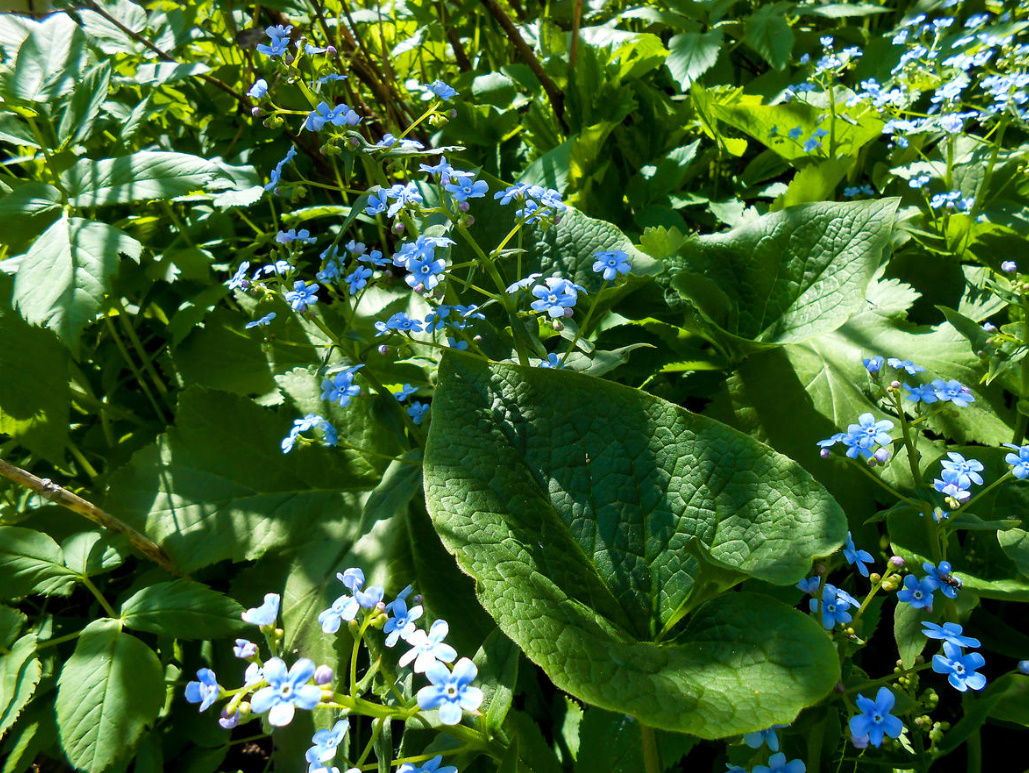
This is a perennial winter-green (in the south) plant with a height of 30-45 cm and a width of up to 60 cm. The basal leaves are up to 25 cm long, long-stemmed, kidney-shaped-heart-shaped, with a sharp tip, dark green above, grayish below, rough from the villi. The flowers are small, 7-10 mm in diameter, dark blue, with a white spot in the center, collected in a paniculate inflorescence; they bloom from the end of April (in the south – from February) to June inclusive (about a month). In warm weather, repeated flowering is observed in autumn.
Spectacular varieties
It is very difficult to give the palm to one variety, because everyone is good in their own way.
‘Betty Bowring’
The plant is 30-40 cm tall . The leaves are heart-shaped, dark green, rough texture. The flowers are white, they bloom in April or May.
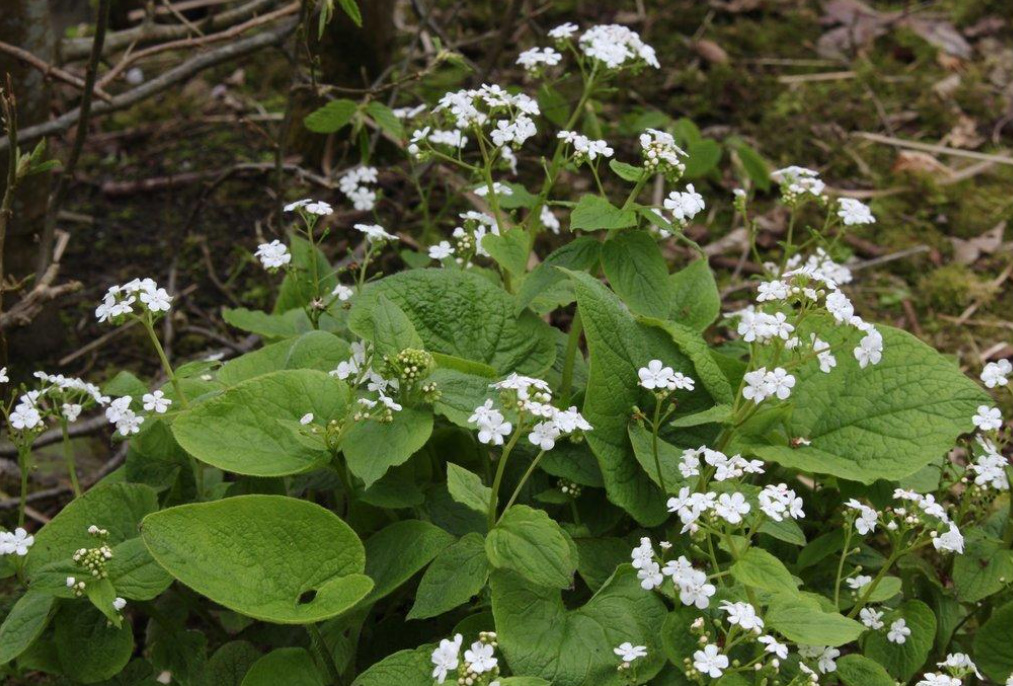
‘Dawson’s White’
It is spectacular due to the wide creamy-white border, which comes into the green background of the leaf blade with deep strokes. It is not so demanding of shading — it grows well and looks in places where direct sunlight illuminates it in the morning.
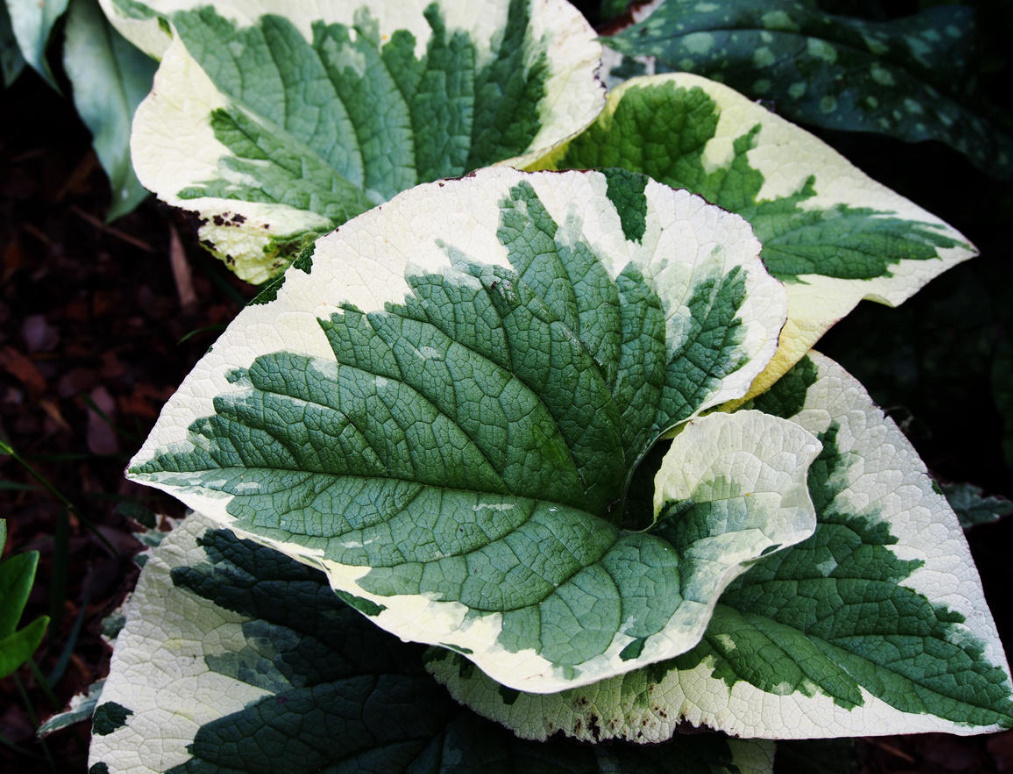
‘Hadspen Cream’
The leaves are decorated with a narrow creamy-white border. He and the previous variety have almost white leaves in sunny places that need to be removed, because they turn ugly when they age.
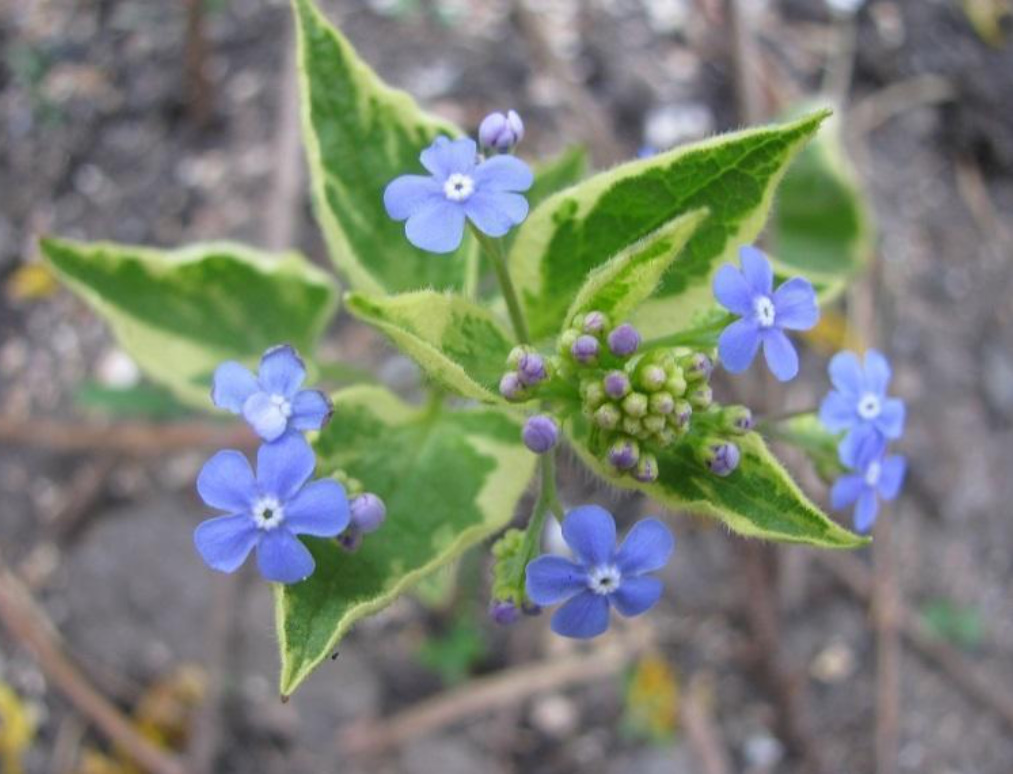
‘Jack Frost’
The leaves are silvery, with dark green veins and a border. It quickly reaches its decorative value, but it is important to choose the right place for planting. If only the light morning sun illuminates the plant for several hours, then the surface of the leaf blade will become bluish-white, the veins will acquire a more saturated shade of blue, and Brunnera will not be equal in beauty. Under direct sunlight for more than 2-3 hours a day, most of the leaf will turn white, only the veins will be greenish-blue.
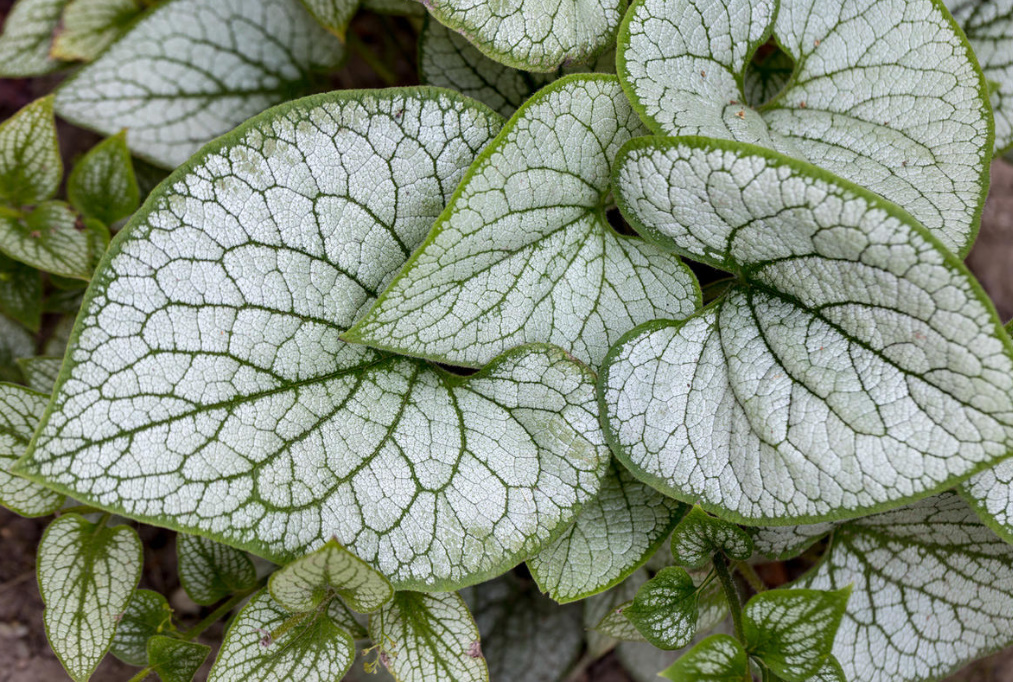
‘Langtrees’
An unusual variety with a height of 30-40 cm . The leaves are dark green, with regular silver-gray spots between the veins located closer to the edge of the leaf blade. Spotting will persist throughout the growing season. The flowers are small, blue.
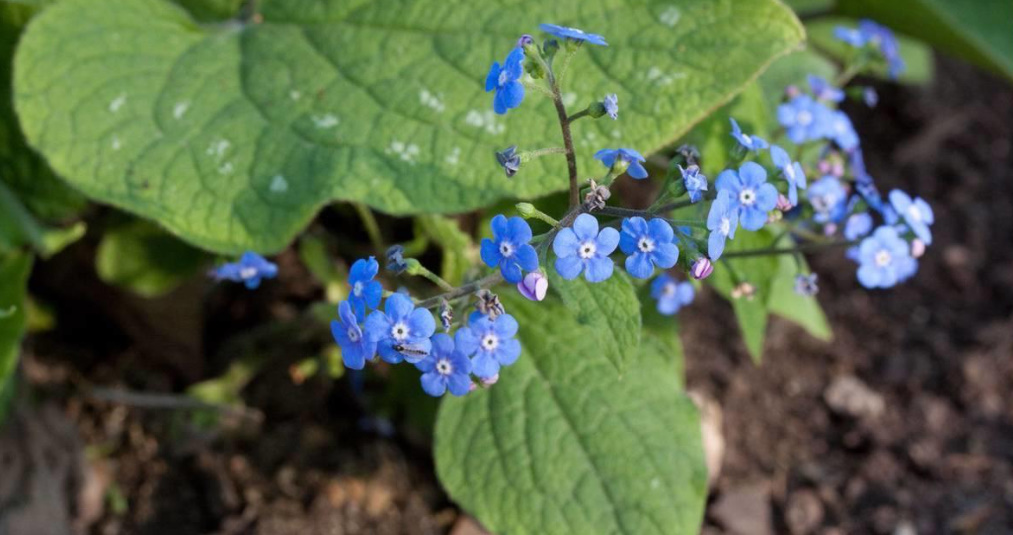
‘Silver Wings’
Its beauty will be revealed gradually, and only in the third year of life the variety will reach its maximum decorative value, light spots along the perimeter of the leaf blade will become silvery. For him, a light morning sun is mandatory for several hours, in the afternoon — exclusively shade, otherwise the leaves turn pale and lose their “silver wings”.
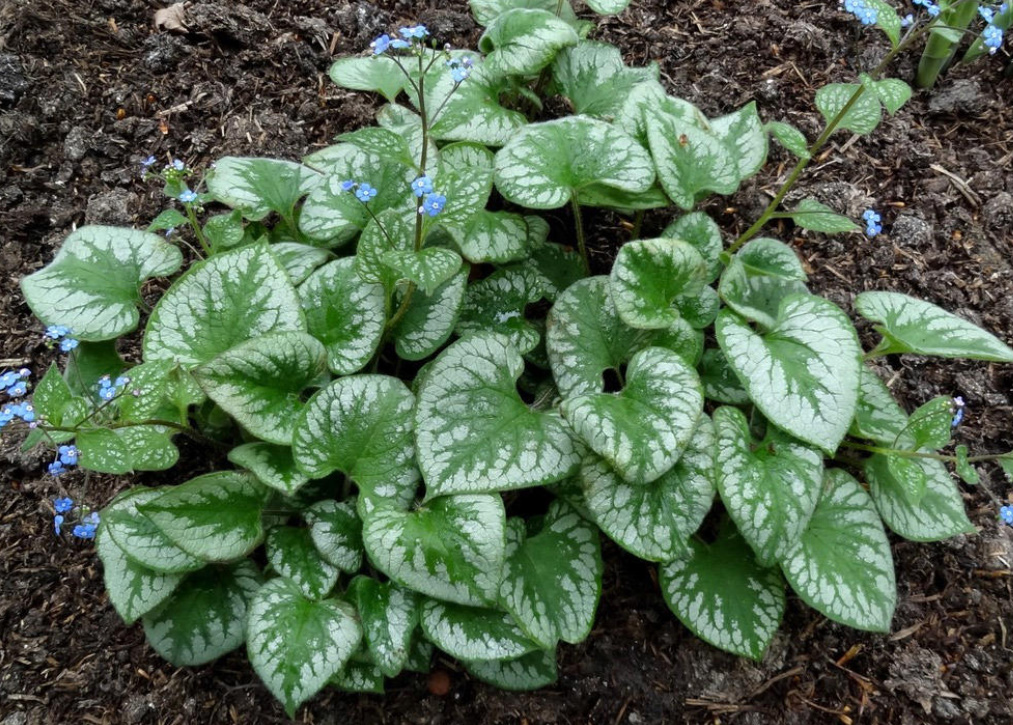
Brunnera Lookalikes
Brunnera is easily confused with Myosotis. And it’s easy to distinguish them from each other: Brunnera flowers have a white center, Myosotis has a yellow center. And the leaves of Brunnera are completely different, more elegant in shape and color.
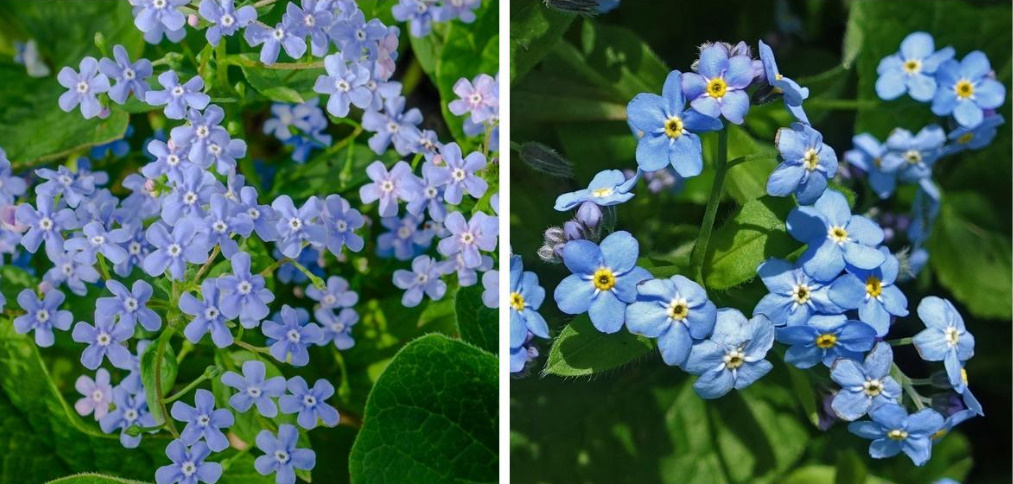
Brunnera has another double — Omphalodes verna. It is characterized by lanceolate leaves in the basal rosette and sky-blue flowers blooming in May.
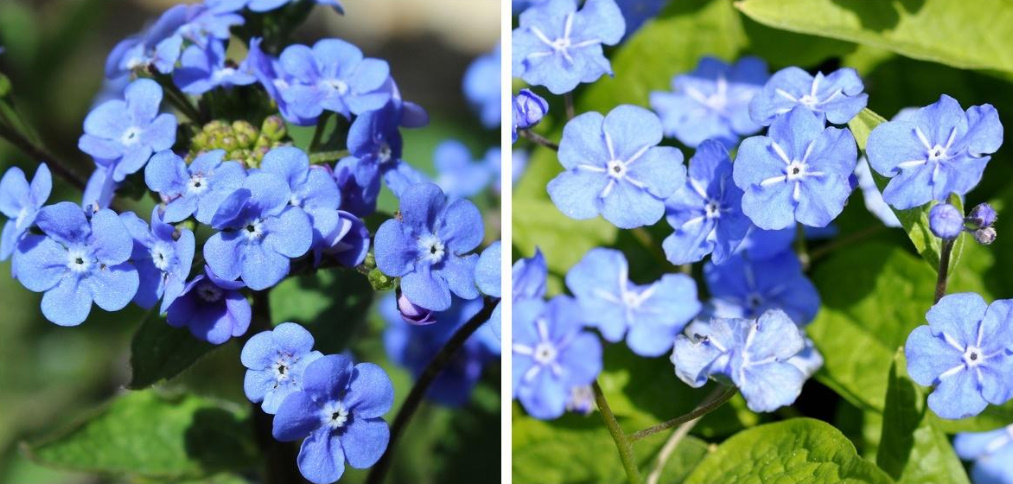
Nuances of placement and care
Brunnera is quite hardy: winter hardiness, according to USDA data, corresponds to zones 3-9 — in the middle zone it can winter without shelter. In the first years after planting, you can hedge and mulch it with peat, compost or humus.
In the south, it is better to plant in partial shade, in the middle zone it can be grown in open areas. In the shade, the plants stretch out and lose their decorative effect.
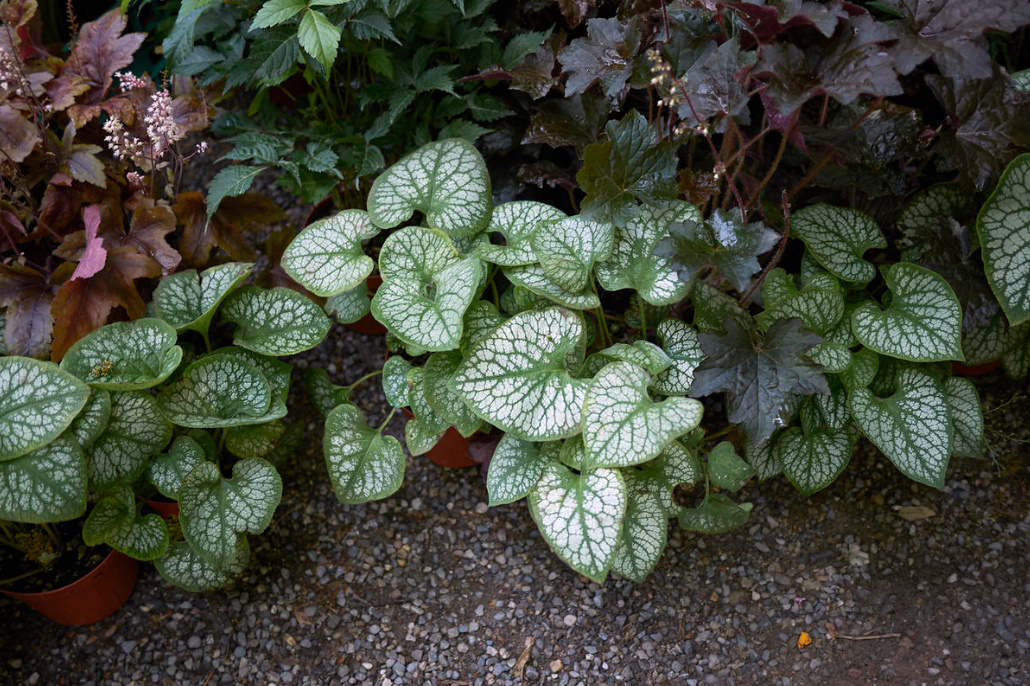
It grows and blooms better on fertile light slightly alkaline soils, in moist places, but without stagnation of water. In humus-rich areas, especially those fertilized with fresh manure, active long-term leaf growth begins, and this is bad: the natural rhythm of development is disrupted, which can lead to poor overwintering.
In heat and drought, regular and abundant watering is needed. Brunnera does not like tight landings. When transplanting from the garden to a limited amount of soil substrate in a container, it is capricious, the leaves turn pale in a few days, the contrast of colors fades. And this will continue until you return it to the open ground, where Brunnera will quickly recover.
Resistant to pests and diseases. Occasionally it can be affected by powdery mildew, smut. Juicy Brunnera rhizomes are to the taste of mice.
Reproduction and transplantation
Propagate mainly vegetatively (seeds are tied weakly) or by sowing for winter. Under optimal conditions, self-seeding is observed.
In the middle zone, the division of rhizomes is better carried out in August, in the south — in late October and early November: the plants have already laid flower buds next year by this time. Planting the cuttings immediately in a permanent place will allow them to take root properly and overwinter well.
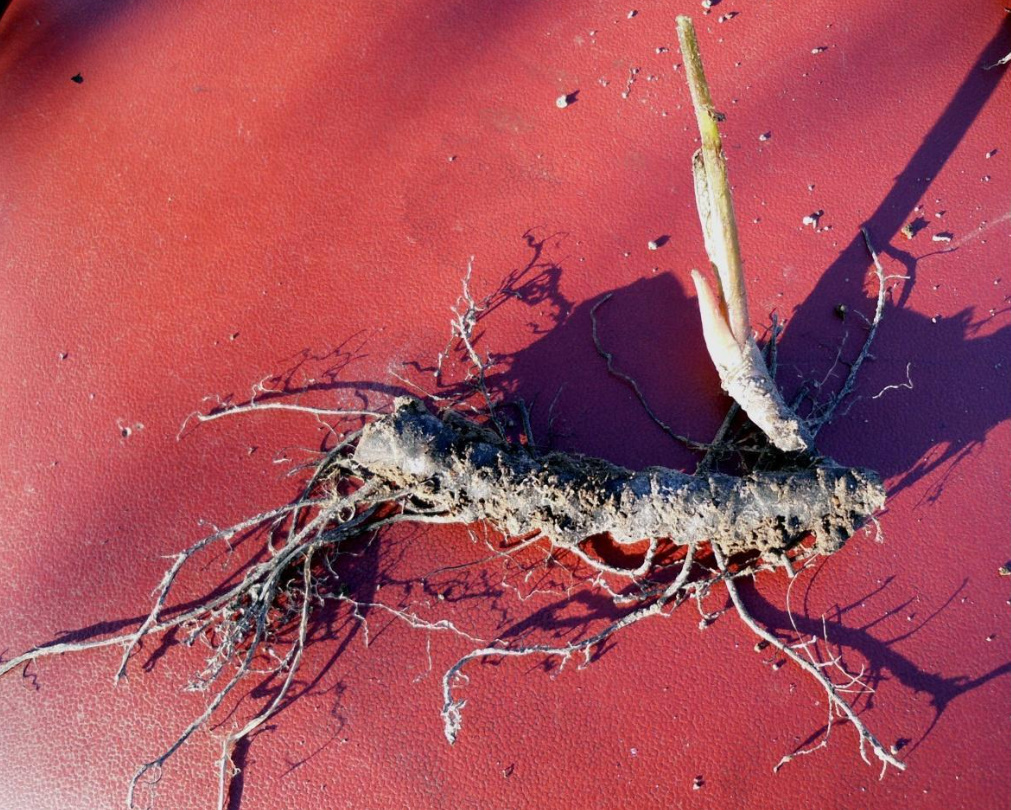
The rhizome is not deeply buried during planting. With good care, one 4-5-year-old mother plant is able to give 15-20 cuttings that will bloom in the first year of vegetation. The planting density is 9 pcs. per 1 m².
Brunnera’s Partners
We have determined the optimal location for Brunnera. Now let’s find out who she will be more comfortable with next door. First of all, in a mixborder or a wide border, different varieties of the most blue-eyed beauty look good next to each other.
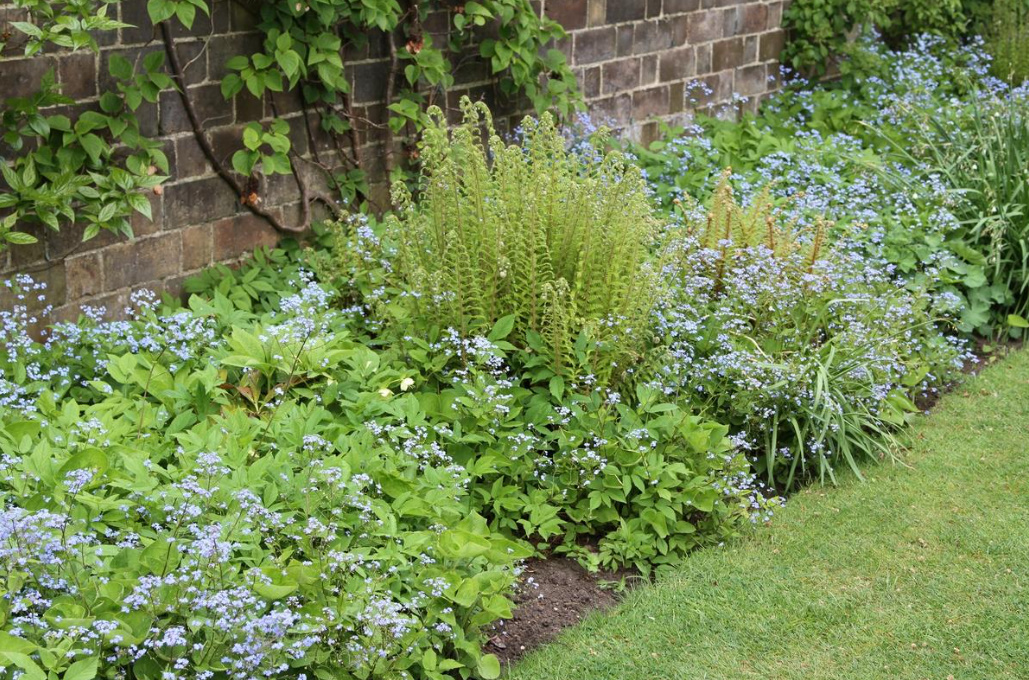
An excellent company for her will be the queen of the shadow — host varieties ‘Catherine’, ‘Halcyon’, ‘First Frost’, ‘Royal Standard’, ‘Flemish Sky’, ‘June’ and others. The greatest decorative effect will be obtained when arranging yellow-, variegated- and silver-leaved varieties individually or in combination with green-leaved species.
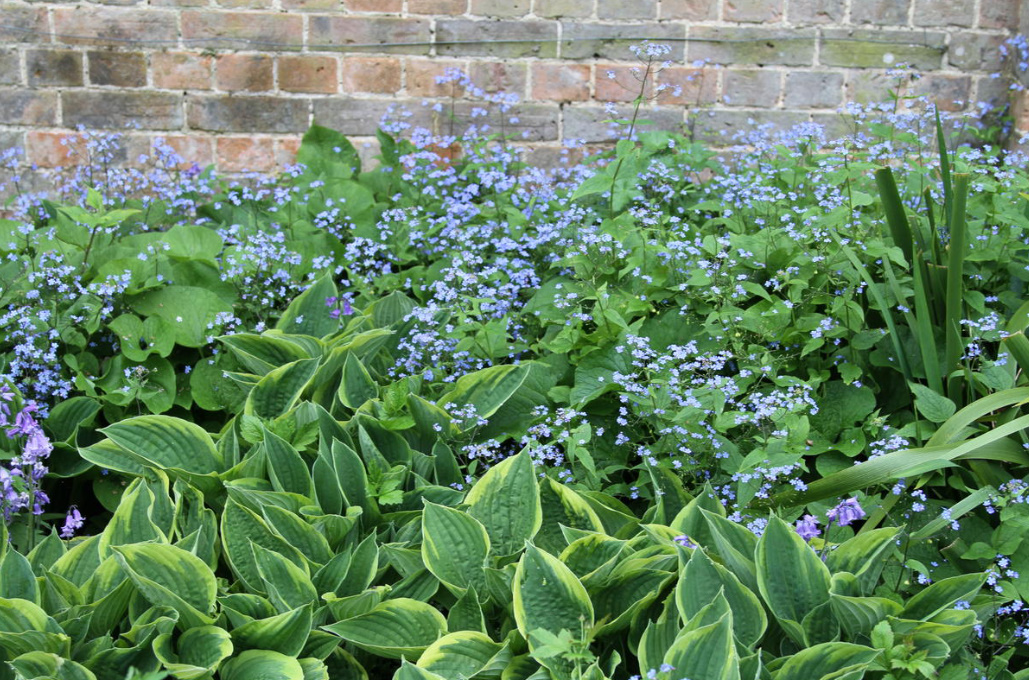
Good partners for variegated Brunnera will be Heuchera varieties — ‘Silver Scroll’, ‘Guardian Angel’, ‘Mocha’, ‘Midnight Rose’, ‘Amethyst Myst’, ‘Frosted Violet Dream’, ‘Encore’, ‘Obsidian’, ‘Pistache’. Moreover, they can be arranged in two directions of leaf coloring — warm or cold colors.
In the foreground in front of Brunnera, various primroses will look great. Silvery varieties of blue-eyed beauty will “play” on the background of Dicentra with pink flowers.
In a flower garden with Brunnera, you can plant Helleborus — ‘Red Lady’, ‘Blue Lady’, M. black. Next to it, the European hoof with rounded leaves or openwork ferns will be harmonious.
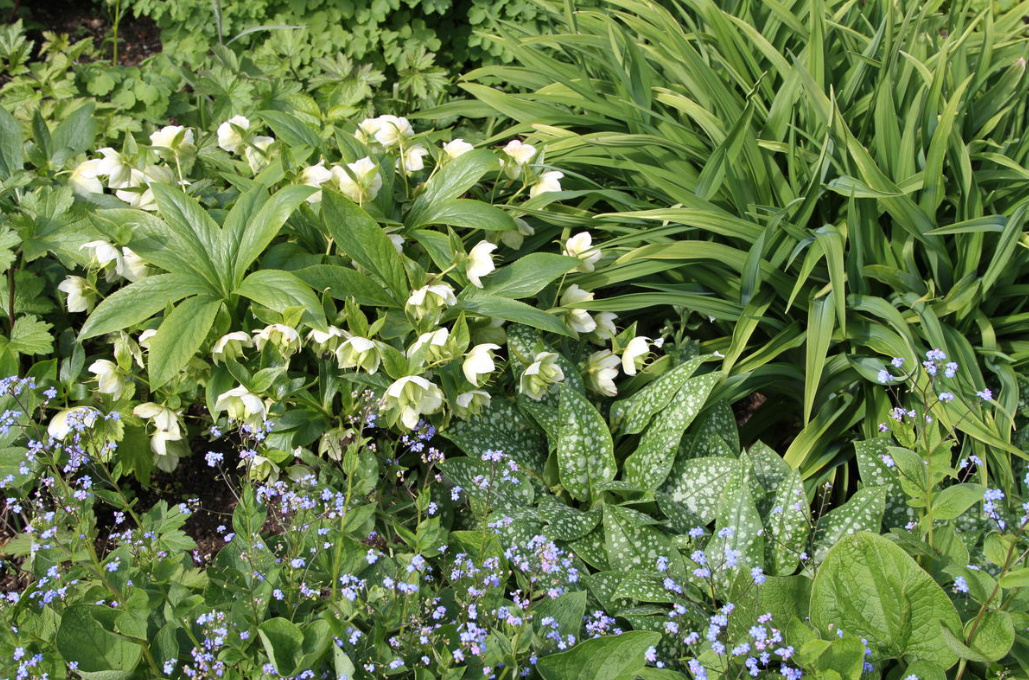
Brunnera will favorably accept the neighborhood with other lovers of semi—shaded moist places – Athyrium filix-femina, Polystichum setiferum, Pteridium aquilinum.
Is Brunnera already growing in your dacha? What place and neighbors did you pick up for her?
